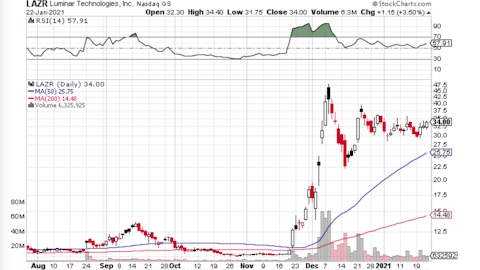LRT Capital Management, an investment management firm, published its second-quarter 2021 investor letter – a copy of which can be downloaded here. A return of +29.68% was recorded by the LRT Economic Moat strategy for the Q2 of 2021, extending its 12-month returns to +42.18%. You can take a look at the fund’s top 5 holdings to have an idea about their top bets for 2021.
In the Q2 2021 investor letter of LRT Capital, the fund mentioned Roku, Inc. (NASDAQ: ROKU), and discussed its stance on the firm. Roku, Inc. is a Los Gatos, California-based video streaming company, that currently has a $53 billion market capitalization. ROKU delivered a 19.79% return since the beginning of the year, extending its 12-month returns to 171.65%. The stock closed at $397.73 per share on August 09, 2021.
Here is what LRT Capital has to say about Roku, Inc. in its Q2 2021 investor letter:
“For a long time, we have had a small position in Roku, Inc. (ROKU), and we wanted to give you more information about why we like this company. The small size of the position (approximately 1.9% of our total equity exposure) reflects the stock’s volatility – we size positions inversely to their volatility. This section was written by our intern, Jimmy Qian, with light edits by me. Jimmy is a rising junior at the University of Texas at Austin interested in working in the asset management industry.
Executive Summary
Roku is the leading TV streaming platform in the U.S and globally. The company’s mission is to be the leading company that connects the entire TV ecosystem of viewers, content publishers, and advertisers. Roku’s business model has two parts: selling streaming devices (Player Segment), and selling streaming content such as subscriptions, ads, and video-on demand services (Platform Segment). The Player segment operates with low margins and acts as a gateway to get users hooked on streaming content. The content in turn generates very high margins for Roku, which makes the company’s business model analogous to the razor-razorblades models of success of companies in the past. The Roku platform allows users to personalize their content selection with cable television replacement offerings and other streaming services that suit their budget and needs. The company is focused on improving its scale, engagement, and monetization. First, scale is based upon the number of active accounts. Second, improving engagement grows the number of hours watched for the company. Lastly, monetizing user activity by content subscriptions or advertising drives revenue growth.
Historically, investors viewed Roku as a provider of commoditized hardware. However, we see the business as a provider of a platform for streaming services with ongoing recurring revenues as the company reduces its reliance on hardware sales for profits. In fact, over the past 5 years, the share of revenue coming from hardware sales has shrunk to just 45%, while its contribution to gross profit declined to 19%.1 We believe that the company’s strong competitive advantage is rooted in its high switching cost and scale-based cost advantages. In addition, we believe Roku is only in the beginning stages of its growth both domestically in the United States and internationally where the cord-cutting phenomenon is at least five years behind the U.S. Lastly, Roku’s capital allocation strategy has been exemplary and focused primarily on acquisitions that improve the customer experience and value of its platform. The moat, growth opportunities, and the company’s track record of capital allocation makes us believe that Roku can deliver strong investment
returns to shareholders in the upcoming years…” (Click here to see the full text)

Photo by Nickolas Nikolic on Unsplash
Based on our calculations, Roku, Inc. (NASDAQ: ROKU) was not able to clinch a spot in our list of the 30 Most Popular Stocks Among Hedge Funds. ROKU was in 63 hedge fund portfolios at the end of the first quarter of 2021, compared to 60 funds in the fourth quarter of 2020. Roku, Inc. (NASDAQ: ROKU) delivered a 26.62% return in the past 3 months.
Hedge funds’ reputation as shrewd investors has been tarnished in the last decade as their hedged returns couldn’t keep up with the unhedged returns of the market indices. Our research has shown that hedge funds’ small-cap stock picks managed to beat the market by double digits annually between 1999 and 2016, but the margin of outperformance has been declining in recent years. Nevertheless, we were still able to identify in advance a select group of hedge fund holdings that outperformed the S&P 500 ETFs by 115 percentage points since March 2017 (see the details here). We were also able to identify in advance a select group of hedge fund holdings that underperformed the market by 10 percentage points annually between 2006 and 2017. Interestingly the margin of underperformance of these stocks has been increasing in recent years. Investors who are long the market and short these stocks would have returned more than 27% annually between 2015 and 2017. We have been tracking and sharing the list of these stocks since February 2017 in our quarterly newsletter.
At Insider Monkey, we scour multiple sources to uncover the next great investment idea. For example, pet market is growing at a 7% annual rate and is expected to reach $110 billion in 2021. So, we are checking out the 5 best stocks for animal lovers. We go through lists like the 10 best battery stocks to pick the next Tesla that will deliver a 10x return. Even though we recommend positions in only a tiny fraction of the companies we analyze, we check out as many stocks as we can. We read hedge fund investor letters and listen to stock pitches at hedge fund conferences. You can subscribe to our free daily newsletter on our homepage.
Disclosure: None. This article is originally published at Insider Monkey.





